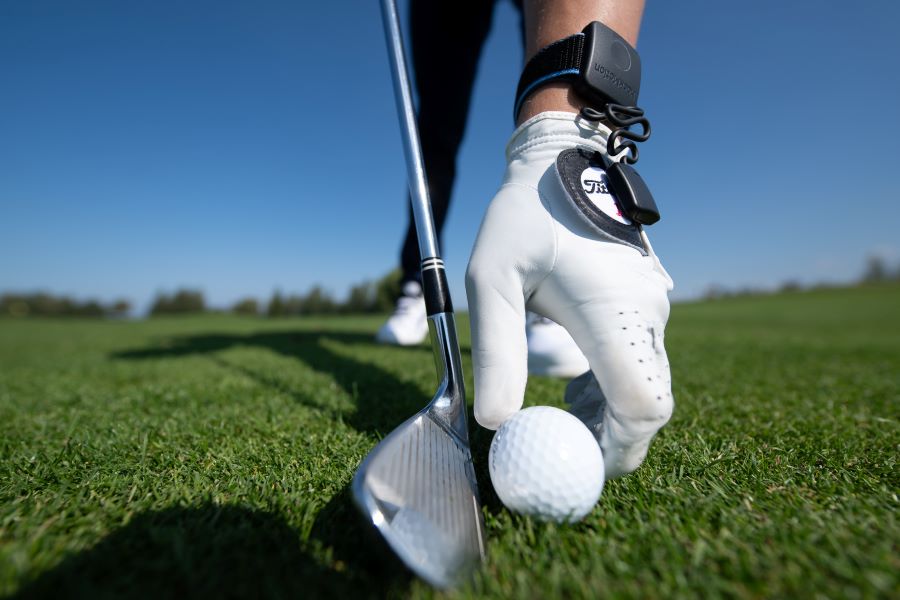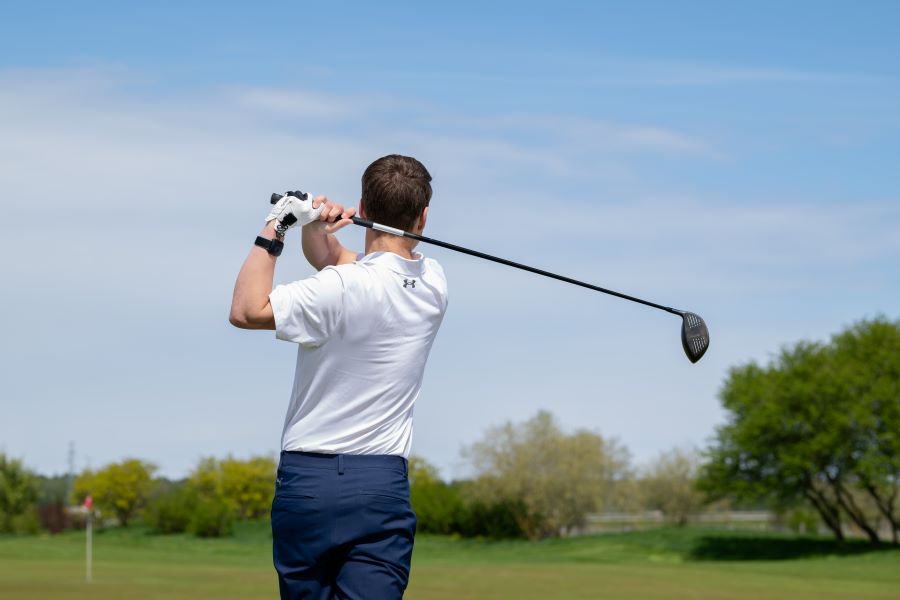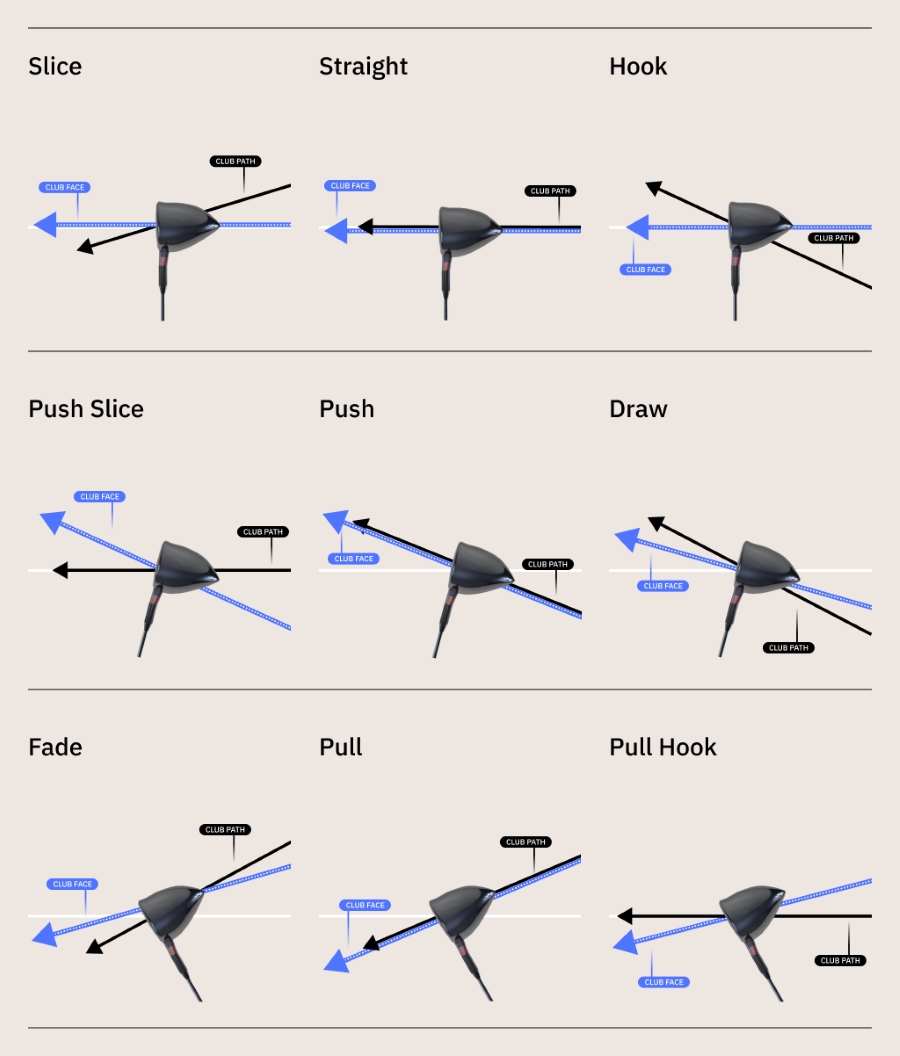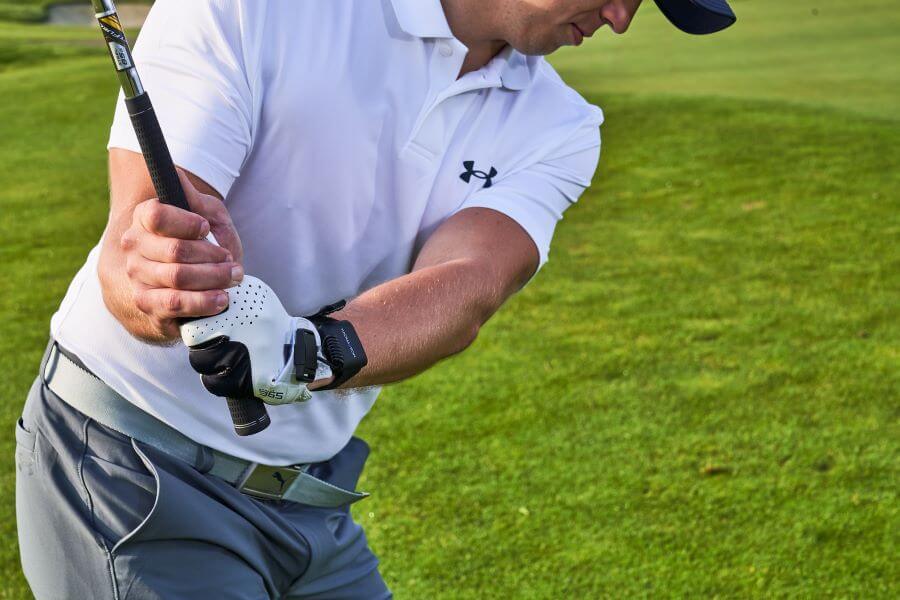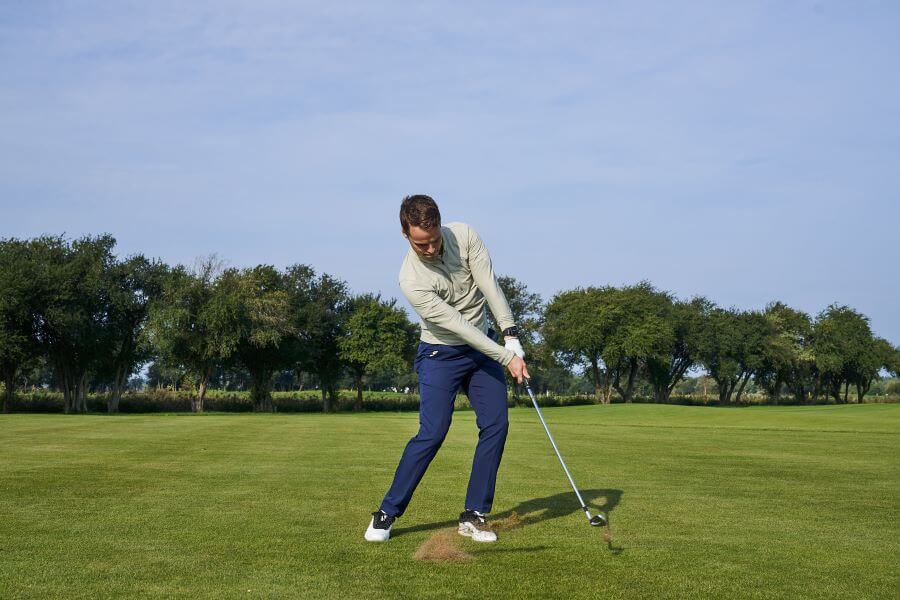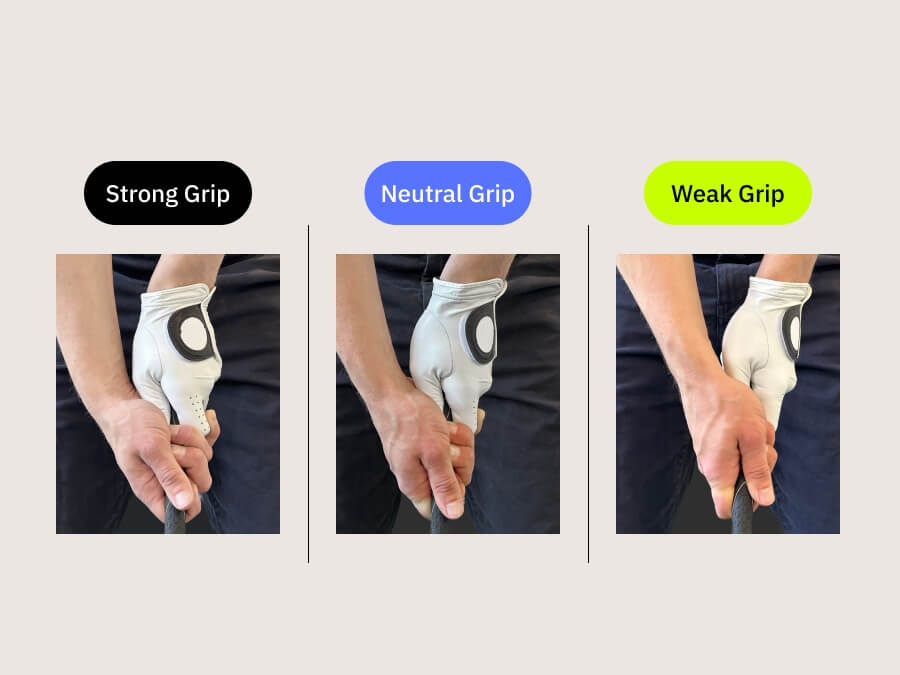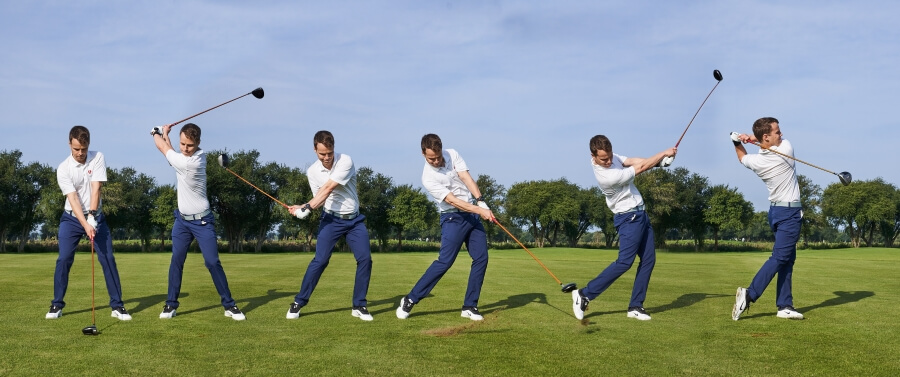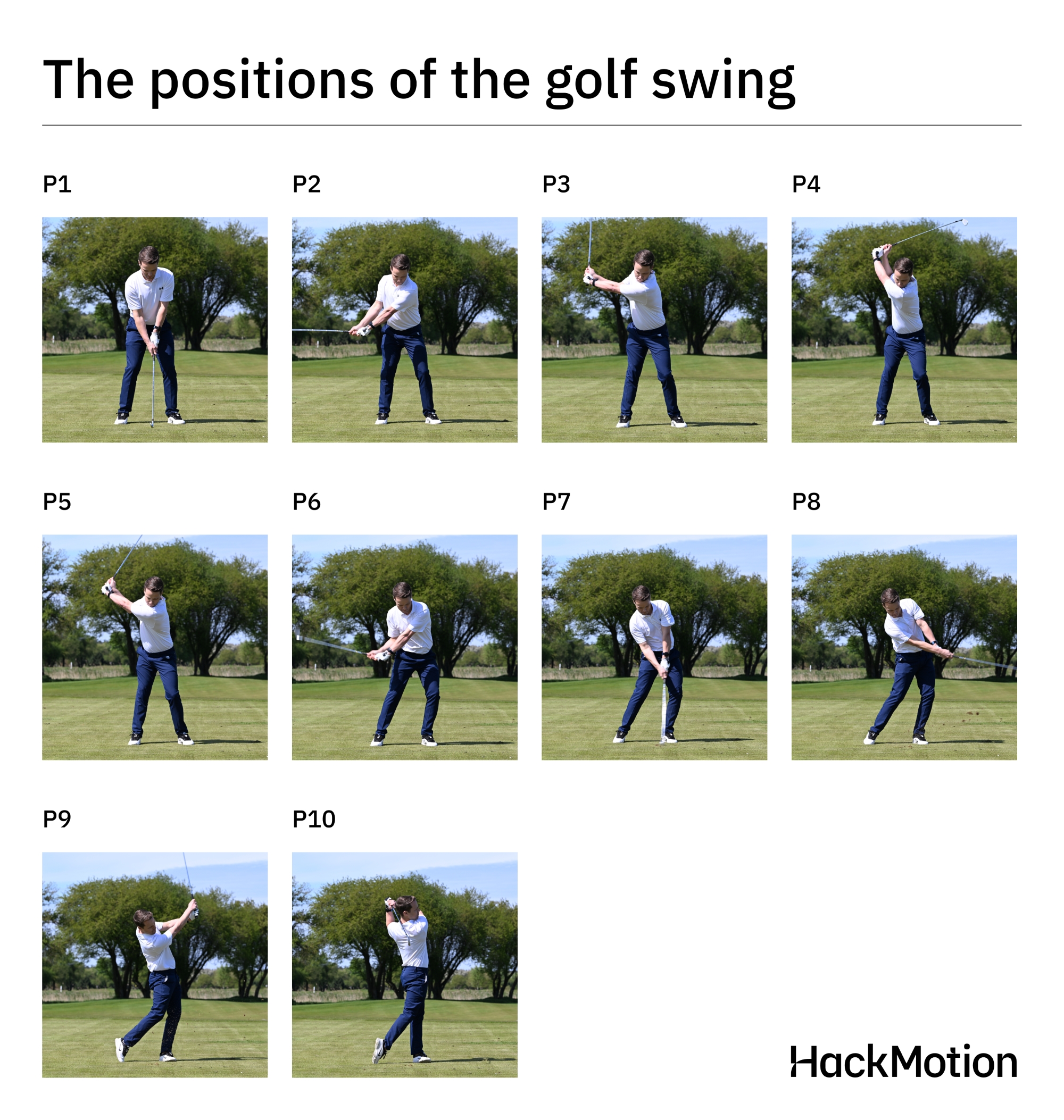How to Release the Golf Club Correctly: Practical Guide with Actionable Drills
How many times have you played golf and heard the following statements: “I never released it,” “My hands were late,” “I released it too early”?
The release is an area of the game where amateur golfers struggle. Once you get the feeling and the concept of the release down, it’s much easier to repeat it.
Amateur golfers can learn to release the club consistently to gain additional yardage and more consistent performance.
We will show you how to release the golf club correctly and how you can learn to refine your wrist movements to ensure consistency.
Releasing the Golf Club (Key Takeaways)
If you don’t have time to read our entire guide on releasing the golf club, here are the most important takeaways:
- Releasing the golf club is not rolling the hands over; it is maintaining proper wrist angle through impact and then allowing your body to rotate.
- The timing of the release in golf is considered paramount, but with proper wrist angles from the top of the backswing to impact, the timing of the release will not be an issue.
- Proper release of the golf club will encourage a square face at impact, more penetrating ball flight, and increased distance.
- Drills for practicing the release should be mostly centered around feel to understand and narrow down the concept.
HackMotion Tip: Use the wrist sensor to analyze your lead wrist angles at impact and through the release. Real-time feedback simplifies understanding and practicing the correct release.
Contents
What is Releasing the Golf Club?
As you swing a golf club back, the clubface opens; when you swing through impact, the clubface squares up, and as you move past the ball, the clubface closes. This is the club’s release; it’s the opening and closing of the clubface at the proper time to hit a straight golf shot.
The release is a difficult concept to think about consciously; it has to be more of a feeling to master it.
HackMotion provides real-time data on your wrist movements to bridge the gap between feel and understanding.
How to Release the Golf Club Correctly
To release the golf club correctly, it makes sense to break the swing down into sections, including setup, top of the backswing, impact, and post-impact.
Follow these steps to release the golf club correctly.
Setup
Ensure that your setup includes a neutral grip, a stable base of support, and weight evenly distributed among your feet.
Although there is no perfect grip position for a proper release, a weak or strong grip makes the process harder.
While setting up to hit, ensure your grip pressure is not overly tight. A tighter grip can restrict some natural wrist movement needed to release the club properly.
Top of the Backswing
The position at the top of your backswing will affect how much work you must do to release the golf club at impact.
When at the top of your backswing, you want to ensure your lead wrist is not overly extended.
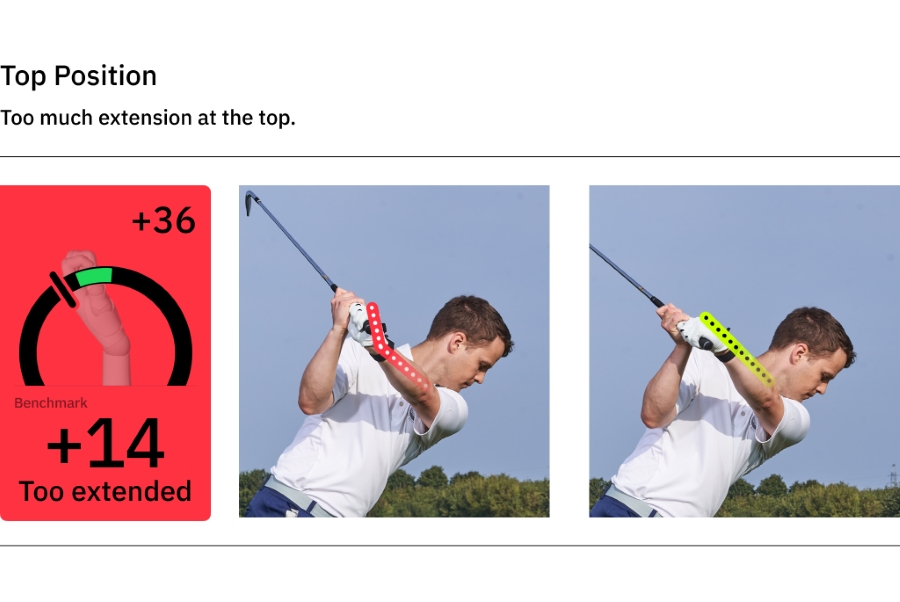
Work on getting to a flatter lead wrist position, which will help result in a club that is on plane and considerably easier to release.
Use the HackMotion static top drill to dial in the wrist position at the top of the backswing.
Static Top Drill in HackMotion
By working on the Static Top Drill, you can create muscle memory and achieve a flat lead wrist at the top of the backswing.
Static Top Drill – Step by Step
- Setup: Address the ball as you normally would, ensuring proper grip and posture.
- Swing to the Top: Take a slow backswing and pause at the top of your swing.
- Check Feedback: Look at the HackMotion data to confirm your lead wrist is flat or slightly bowed.
- Make Adjustments: If needed, adjust your wrist position and try again.
- Repeat: Practice 8–10 times, focusing on consistency at the top.
Approaching the Golf Ball
Now that your club is in the correct position at the top of the swing, we have to look at what happens when you approach the ball.
To release the club properly, you must still have the left wrist flexed or flat through impact. Without this wrist position, the angle of attack is incorrect, and the clubface angle is also usually open.
As your hands move into the golf ball, you should decrease extension and flatten the lead wrist.
Impact
At impact, the lead wrist is flat or slightly flexed. We like to think of impact as the midpoint in the release motion.
After you have made contact with the golf ball, the lead wrist starts to move from the point of flexion to extension. This happens as the trail arm passes over the lead arm.
The key piece of advice to walk away from here is that the lead wrist stays flexed through impact and then moves to extension after impact.
The best way to practice your release at impact is the HackMotion Release drill.
Perfect Your Release with HackMotion
Fine-tune your release for consistent contact. Start with a short swing to master control before adding power.
HackMotion Release Drill (Halfway to Halfway)
- Setup: Begin at address with proper grip and posture, ensuring hands are slightly ahead of the ball.
- Swing Path: Swing from halfway back (club parallel to the ground) to halfway through (club parallel after impact).
- Focus: Pay attention to maintaining wrist angles and ensuring the hands lead through impact.
- Ball Flight: Hit 10 shots at a slow speed, focusing on clean contact and ball flight. Adjust if necessary.
- HackMotion Integration: Wear the wrist sensor during this drill to monitor wrist movement and ensure correct release patterns.
After Impact
After impact, your lead wrist continues to move to the point of extension, and the trail wrist moves into flexion. This continues all the way through until the club stops moving and you are fully facing your target.
While wearing your HackMotion, take some swings where you go from halfway back to halfway through.
After contact with the ball, you should notice your wrist going from a slightly extended or flexed position to flexed and then extended again.
Actionable Tips for a Better Release
Here are a few of the most important tips you can use to quickly improve your release position and consistency:
- Golfers with better extension and rotation through impact tend to have more success with the release.
- A downward strike is key to a better release; if you are leaving weight back and trying to flip under the ball, you will not release the club correctly.
- At the point of contact, the lead wrist and the lead arm will feel as though they are straightened.
- Don’t let the golf club get ahead of the lead arm until after impact.
- Practice the release at a slower speed before you start to use it for the full swing; the feel takes a bit of time to get down when you are moving the club at a faster speed.
- Keep grip pressure to a minimum to avoid restricting your wrists.
Common Wrist Release Mistakes and How to Fix
If you are struggling to release your wrists, here are some of the issues that could be causing the issue.
| Mistake | Impact | How to Fix |
|---|---|---|
| Flipping wrists too early | Loss of power, inconsistent flight | Practice Release Drill; keep lead wrist flat at impact |
| Rolling hands over | Hooks or pulls due to closed clubface | Rotate the body instead of the hands |
| Weak or tight grip | Limits wrist movement and control | Use a neutral grip; avoid squeezing |
| Leaving weight back | Topped or thin shots | Shift weight forward; practice downward strike |
| Over-extended lead wrist | Hard to square clubface | Keep lead wrist flatter at the top |
Final Thoughts
At this point, you can see why wrist action in the golf swing is so important to create the proper release.
Learning to release the golf club correctly starts with understanding what the release is and the sequence of events in your swing.
Practicing the feel of the release is much easier to do when you have real-time data and feedback from HackMotion. Use tools and drills to improve your release, and watch your consistency and performance improve.





